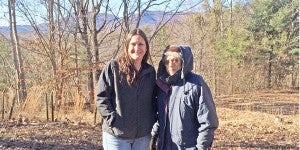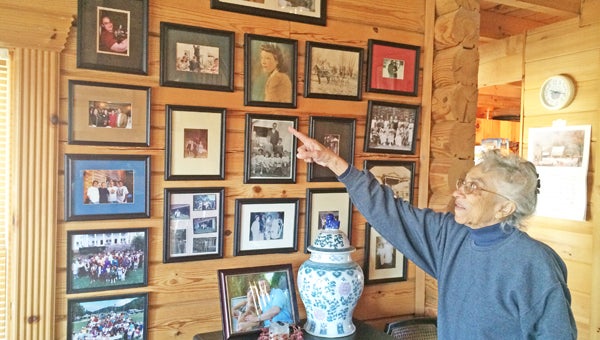Historic land in Tryon township forever preserved
Published 10:36 pm Thursday, February 6, 2014
Beryl Hannon Dade is a walking history book. She exudes a love of family, heritage and the land where she lives. She recently worked with the Pacolet Area Conservancy to permanently protect the land from any future development.
The property is part of the original Scriven lands. Oren Hannon, who purchased the first parcel from the Scrivens, had a connection to the original Hannons on his paternal side.

Pam Torlina and Beryl Hannon Dade on the property owned by Dade and protected by PAC. (photo submitted)
Oren’s maternal side was connected to the Cherokee tribe. The original Hannons were some of the earliest settlers of the Tryon area.
William Hannon Sr., the original Hannon to settle in Tryon, was born in 1731 in Frederick, Va., married and then settled in North Carolina by the 1760s.
He was the father of a large family, and in 1776, William and all but three of his children were killed by Cherokees. One of his sons, Edwin Hannon (1766-1825) married Caroline Earle and was the father of 12 children.
Elizabeth Carruth Hannon, widow of William Hannon, Jr. (1805-1848), acquired Lucinda by a will, dated 1850, from her mother, Mary Logan Carruth. Green Hannon may be the former slave of Thomas Edwin Hannon (1790-1868).
The 1870 census states that Green Hannon (born in Alabama) and wife, Lucinda, (born in North Carolina) were the parents of John Richard Hannon, father of Oren Hannon, father of Beryl Hannon Dade. Oren Hannon bought the land in 1924.
Today their descendants live all over the country but Beryl remains in Tryon.
Dade began talking with the Pacolet Area Conservancy (PAC) in 2007 about placing a conservation easement on her land. She continues to own the land and use it as she always has, but now she has the peace of mind of knowing the land will forever be protected with its native plants and wildlife.
She says, “Working with PAC was the perfect choice for me so that my children and grandchildren, nieces and nephews, will be able to enjoy the land and know about the heritage that is here. My parents would be very proud!”
PAC assists willing landowners who wish for their lands to be permanently preserved. The Dade land’s historical significance is not the only reason for protection.
PAC Director of Stewardship and Land Protection Pam Torlina, says, “The land is special for many reasons. It is a mixture of hardwoods and conifers and provides habitat for a variety of flora and fauna. It is also in close proximity to other PAC protected properties, which makes it additionally attractive to us.”
PAC is a proud member of the Conservation Trust for North Carolina, Blue Ridge Forever and The Land Trust Alliance (LTA), whose standards and practices guide the work PAC does. PAC will be going through a national accreditation process with LTA next year and are hard at work assembling evidence and enacting sound policies to achieve this distinction.
To date, PAC has protected 60 properties through conservation easements. Additionally, 25 parcels of land are owned by PAC in fee simple, bringing the total of protected lands to more than 8,500 acres, creating a treasury of mountains, rivers, streams, farmlands, forests and greenspace – land that will be forever preserved.
The Pacolet Area Conservancy is a 501(c)(3) non-profit land conservation organization founded in 1989 to protect and conserve the area’s natural resources.
PAC works with area landowners to ensure the long-term protection of their property through voluntary conservation easements (agreements) which enable landowners to maintain ownership of their property, preserving precious natural resources – open lands, forests, wildlife habitat, scenic vistas, farmland, streambanks and more.
– article submitted
by Pam Torlina






